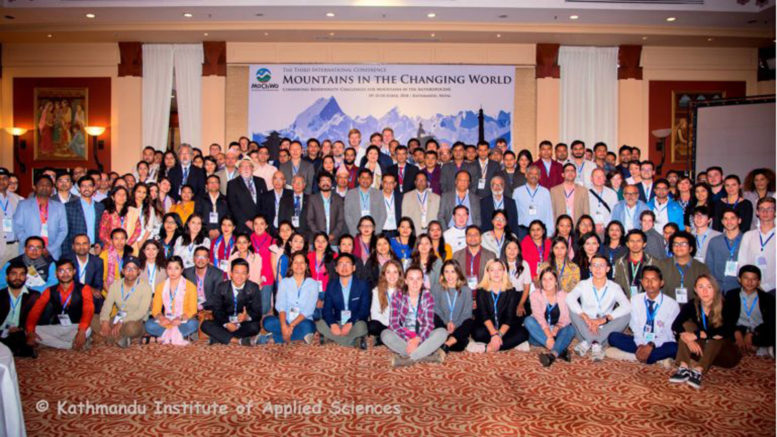Kathmandu: The 3rd International Conference on Mountains in the changing World was held at the Radisson Hotel in Kathmandu where more than 180 scientists, researchers, professors, students, and policymakers from 16 different countries attended. The conference was organized by the Kathmandu Institute of Applied Science (KIAS) from 9 to 10 October.
Zamlha Tempa Gyaltsen, a research fellow at the Tibet Policy Institute attended the two-day conference to highlight the impact of climate change on a mountainous region like Tibetan Plateau.
He spoke on the possible factors that have led to the sudden increase in the number of natural disasters in Tibet since 2016, particularly focusing on the massive 2017 flood in Jomda town. According to his presentation, rising temperature and increased precipitation on the plateau due to climate change are the primary factors causing an unprecedented number of floods and landslides in Tibet.
He added that the situation is further exacerbated by four other factors – rapid urbanization, the topography of the residential areas, poor construction materials and the lack of knowledge of adaptation to the new climatic condition.
The inauguration session was followed by six symposia, seven technical parallel sessions and a poster session. Furthermore, cross-cutting issues regarding mountains such as air pollution, disaster risk reduction, climate change, biodiversity conservation, solid waste, forest management, agro-economy, sustainable development, citizen science were discussed with oral and poster presentations throughout the sessions.
Tempa said that the rapid urbanization drive in Tibet has led to excessive construction works across the mountainous region, town and cities expanding over river banks and on unstable slopes. Unfinished construction works on the mountain slopes lead to landslides, especially during the raining season.
He criticized the Chinese government’s inability to carry out a thorough awareness program to educate both the government officials and the general public about the threats from climate change and rising temperature.
Tempa also emphasized the need for Tibetans to proactively adapt to the new climatic reality so as to take advantage of the more pleasant weather and increased rainfall in the region, but most importantly to take steps to mitigate possible threats from increased floods and landslides.
“Listening to the numerous speakers at the conference, I realized that what is happening in Nepal will soon happen in Tibet, if we fail to proactively adapt to the new climatic conditions and mitigate its negative impacts. So it’s very important that we need to learn from other mountainous regions” said Zamlha Tempa Gyaltsen.
-Filed by Tibet Policy Institute

